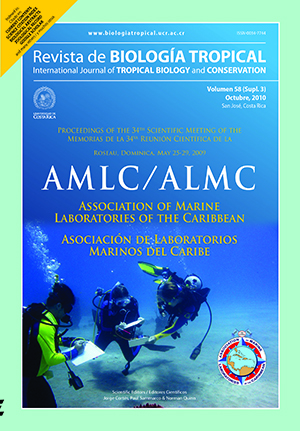Abstract
Artificial reefs are often discouraged in shallow waters over concerns of storm damage to structures and surrounding habitat. Biorock coral reef restoration projects were initiated in waters around 5m deep in Grand Turk, at Oasis (October 2006) and at Governor’s Beach (November 2007). Hemi-cylindrical steel modules, 6m long were used, four modules at Oasis and six at Governor’s Beach. Each project has over 1200 corals transplanted from sites with high sedimentation damage, and are regularly monitored for coral growth, mortality and fish populations. Corals show immediate growth over wires used to attach corals. Growth has been measured from photographs using a software program and is faster at Governor’s Beach. After hurricanes Hanna and Ike (September 2008) the Governor’s Beach structure was fully standing since the waves passed straight through with little damage, the Oasis structures which were tie-wired rather than welded had one module collapse (since been replaced with a new, welded structure). Hurricane Ike was the strongest hurricane on record to hit Grand Turk. Most cables were replaced following the hurricanes due to damage from debris and high wave action. The projects lost about a third of the corals due to hurricanes. Most of those lost had only been wired a few days before and had not yet attached themselves firmly. These projects have regenerated corals and fish populations in areas of barren sand or bedrock and are now attractive to snorkelers. High coral survival and low structural damage after hurricanes indicate that Biorock reef restoration can be effective in storm-impacted areas.##plugins.facebook.comentarios##

This work is licensed under a Creative Commons Attribution 4.0 International License.
Copyright (c) 2010 Revista de Biología Tropical
Downloads
Download data is not yet available.






